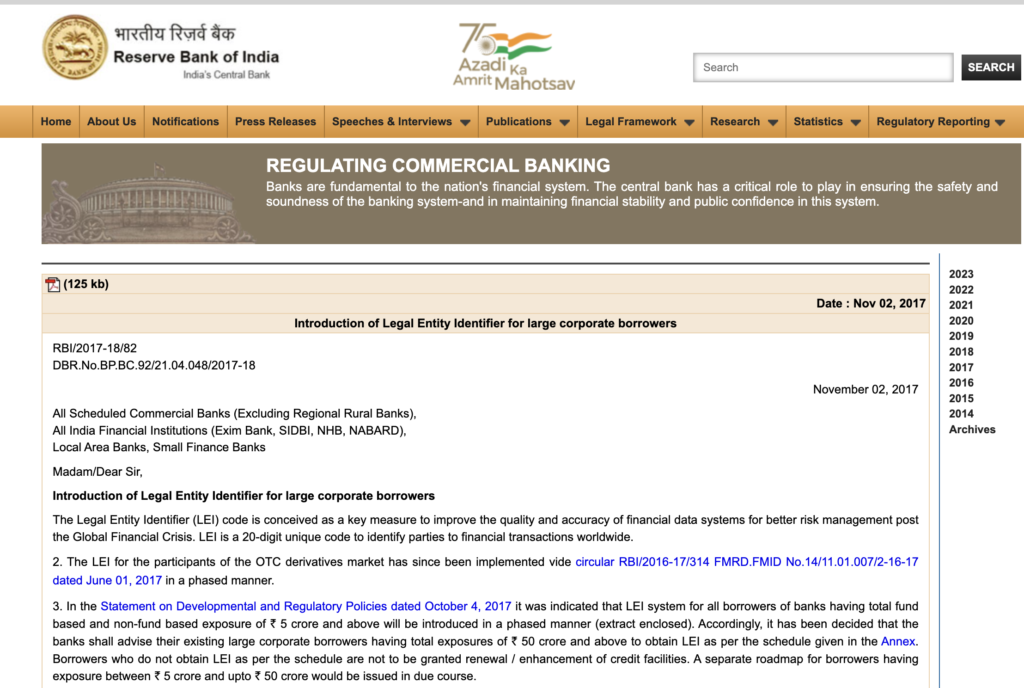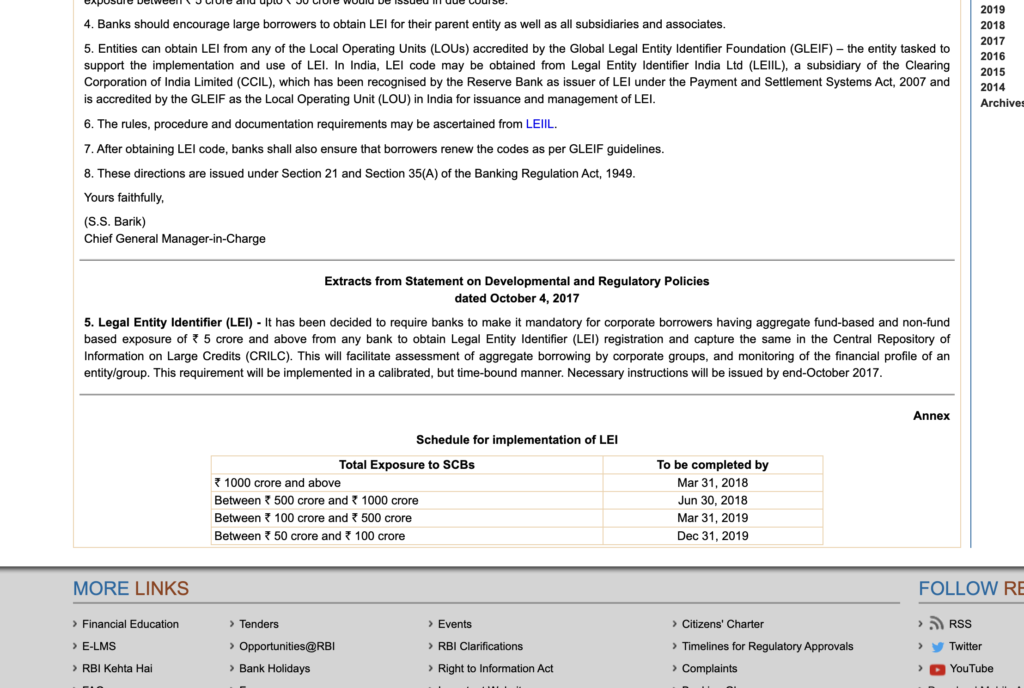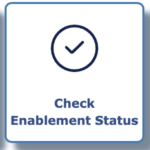The idea of a Legal Entity Identifier, or LEI, has been put into practise internationally. Global regulatory bodies created the idea of the Global Legal Entity Identifier System (or “GLEIS”) to handle the financial crises around the world. The LEI is created to make it simple to identify the parties to a financial transaction and reduce counterparty risk. A global reference data system that uniquely identifies each legal entity that participates in a financial transaction in any jurisdiction is established under LEI.
1. Describe what a legal entity identifier is
Every legal company or structure that is a party to a financial transaction, in any country, is uniquely identified by the 20-digit worldwide reference number known as the Legal Entity Identifier (LEI).
Any legal entity, including banks, mutual funds, partnership companies, trusts, holdings, special purpose vehicles, asset management firms, and other organisations involved in financial transactions are all granted an LEI.
A financial entity’s LEI will serve as identification documentation and make it easier to record transactions to trade repositories.
The Local Operating Unit (“LOU”) Identity number is represented by the first four digits of the LEI, which is a 20-digit number. For instance, LOU 3358 stands for Legal Entity Identifier India Ltd, which is the business authorised to issue LEIs that are worldwide compatible.
The following two digits are reserved and set to zero.
The following 12 digits are randomly generated alphanumeric identity numbers that the LOU assigns to an entity in accordance with fair and ethical allocation standards.
Under ISO 17442, the final two are calculated check digits.
2. LEI’s implementation in India
RBI has gradually introduced the LEI idea throughout India. For all players in the Over-the-Counter (“OTC”) market for Rupee Interest Rate futures, foreign currency derivatives, etc., LEI was initially implemented. Participation in the OTC Derivative market was prohibited for entities without an LEI. LEI became gradually required for the following organisations:
For all Indian bank borrowers, the RBI mandated LEI. Renewal or enhancement of credit facilities are not to be granted to entities without an LEI code;
RBI mandated LEI for the non-derivative market, which includes the money market, non-derivative FX market, and government security markets. SEBI imposed LEI for eligible foreign businesses in the commodity derivative market.
For all Real Time Gross Settlement (RTGS) and National Electronic Funds Transfer payment transactions worth 50 crore rupees or more, the RBI mandated the LEI (NEFT).
For cross-border transactions, such as capital or current account transactions of $50 billion or more, the RBI has now expanded LEI. By October 1, 2022, LEI Numbers must be obtained.
The applicability of LEI to cross-border transactions has been thoroughly discussed in this paper.
3. How Do Cross-Border Transactions Work?
Cross-border transactions are ones in which the payee and the beneficiary are based in different nations. Transactions that aim to transfer money across borders might be made between people, businesses, or financial institutions.
4. Establishment of a Legal Entity Identifier for International Business Transactions
RBi has implemented Legal Entity Identifier on Cross Border Transactions according to The 10th December 2021 Notification No. RBI/2021-22/137 A.P. (DIR Series) Circular No. 20.
With effect from October 1, 2022, resident entities (non-individuals) doing capital or current account transactions of 50 crore and above (per transaction) under FEMA, 1999, will provide the LEI number to AD Category I banks in accordance with RBI instructions.
In the absence of LEI information, AD Category I banks may nevertheless handle the transactions while taking into account non-resident counterparts and foreign companies.
Also, before October 1, 2022, AD Category I banks may encourage concerned parties to voluntarily provide LEI when conducting transactions.
Once an entity obtains an LEI number, it is required to report the LEI number in all of its transactions, regardless of the size of the transaction.
The Global Legal Entity Identifier Foundation’s website provides a global LEI database that AD Category-I institutions must use to guarantee that all related transactions’ LEI information is accurately captured and confirmed (GLEIF).
If this circular is applicable to their constituents, AD banks may let them know. They may also urge entities that conduct significant value transactions (those worth more than 50 crores) under FEMA to get an LEI as soon as possible, if they haven’t already.
Legal Entity Identifier India Limited (“LEIL”) serves as the Local Operational Unit in India that has the authority to issue LEIs.
Any organisation need to receive LEI may do so by going to https://www.ccilindia-lei.co.in/.
The User Handbook and FAQs for requesting an LEI are available on the website under the heading “Rules, FAQs & Documents.”
6. What to do following the receipt of a Legal Entity Identifier
No matter the size of the transaction, as soon as an entity obtains an LEI number, the LEI number must be recorded in all of that entity’s transactions.
Affected AD Category I banks must accurately record the LEI information and ensure that it is verified against the global LEI database, which is accessible on the website of the Global Legal Entity Identifier Foundation (or “GLEIF”).
Each single payment transaction that an entity (a non-person) makes for 50 crore INR or more must include the remitter and beneficiary LEI information. For transactions made using the NEFT and RTGS payment systems, LEI reporting is required.
For customer transactions when both the remitter and beneficiary are people, an LEI is not necessary. In transactions involving one or more non-individual/s, LEI will be necessary.
7. What alterations will be brought about by Legal Entity Identifiers for Cross-Border Transactions?
By assisting in the assessment of systemic risks and the adoption of corrective measures, LEI can serve as a crucial tool for reducing financial contagion and fostering financial stability because it uniquely identifies legal entities at the worldwide level. In order to answer the questions of “who is who” and “who owns whom,” each LEI provides information on an entity’s ownership structure. As a result, the publicly accessible LEI data pool may be viewed as a worldwide directory, which can significantly increase openness in the global marketplace. By introducing LEI gradually, RBI demonstrates that it is careful and has carefully planned the implementation to prevent commotion and confusion. It is anticipated that LEI will increase openness while also making doing business easier and luring more international investment into Indian markets.
8. What connection does an LEI have to transactions involving securities?
Since January 3, 2018, LEIs have been utilised to identify customers who are legal entities when reporting the securities transactions of investment service providers to supervisory authorities. These transaction reports are used to track transactions and the activity of investment service providers on securities markets, as well as to identify and investigate market abuse. A European Commission implementation regulation specifies the report’s format.
Since January 3, 2018, legal entities that conduct transactions in or outside of a trading venue (regulated market, multilateral trading facility, etc.) involving securities that are admitted to trading, traded on a trading venue, or for which a request for admission to trading has been made, as well as securities where the underlying is a security traded on a trading venue, an index, or b
An entity that has been granted LEI code issuance authority by GLEIF is known as a LOU, or Local Operating Unit. Registration agents, who support organisations in requesting LEI codes, collaborate closely with LOUs.
One industry that employs many internal identities to identify the same client is banking. The bank’s affiliated vendors may also employ other identities. Some of these difficulties could be consolidated by LEI.
The bank of the future will employ organisation identity and LEIs to speed up onboarding, improve workflows, and have a better grasp of the transactions they are being requested to perform, improving both the bank’s and its clients’ safety nets.
Who needs a Legal Entity Identifier?
For transactions in the interest rate, foreign exchange, and credit derivative markets, a legal entity identification (LEI) is required. Additionally, LEI is now required for businesses and organisations with a combined fund-based and non-fund exposure of more than RS 50 crore, according to the Reserve Bank of India (RBI).
Banks and credit providers will be assisted in tracking the exposure of corporate borrowers by legal entity identity. It will stop banks from offering numerous loans secured by the same collateral. Companies have the option of ordering LEI from any LOU or enlisting the aid of service providers like Registration Agents. An LEI Registration Agent is LEI REGISTERTM. Our main goal is to make it simple and quick for Indian businesses to apply for an LEI.




